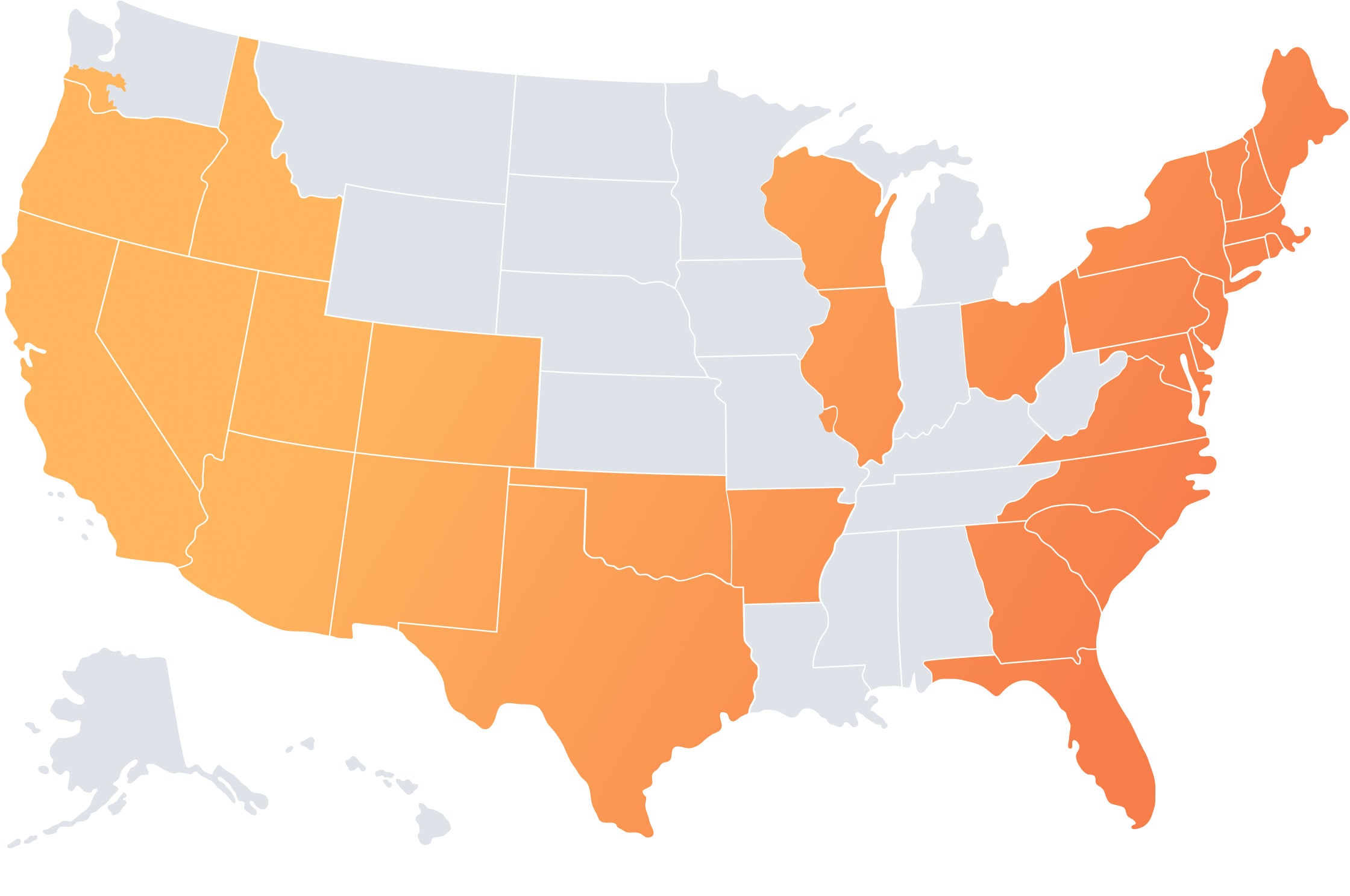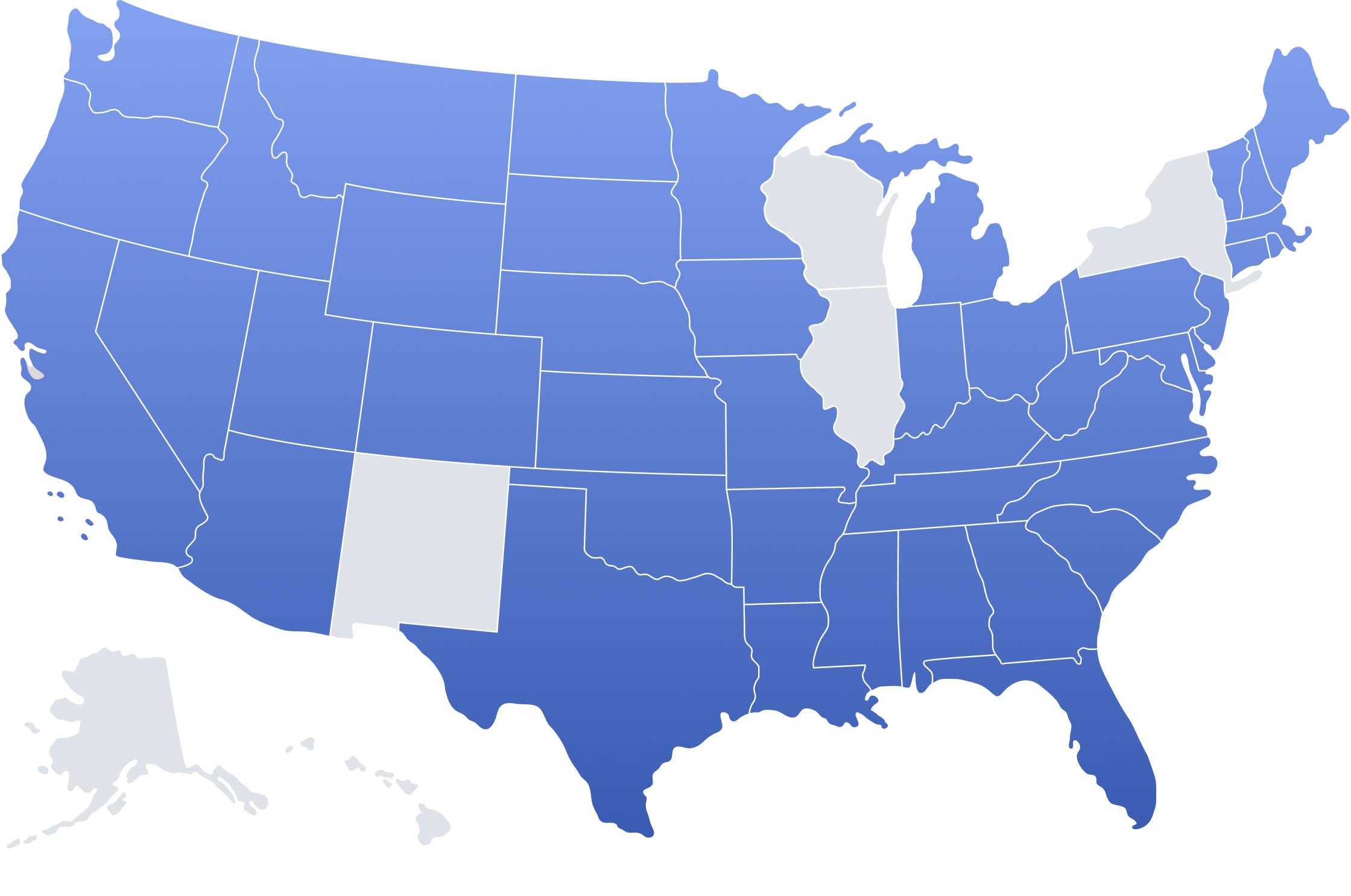
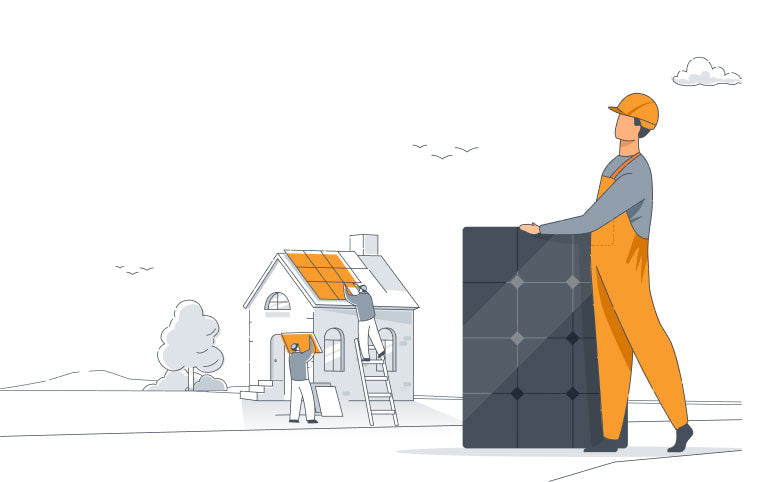




Transparent & Instant Pricing.
Lowest in America
-
Full-Service Install
Turnkey solar design and installation at the lowest price in the United States. Premium equipment, 25 year production warranty.
As low as
$1.61 / watt
Get a Quote -
DIY Install
Save on costs by installing the system yourself. We take care of the equipment, design, engineering, and permitting.
As low as
$1.26 / watt
Get a Quote -
PPA
Get a system installed with no upfront cost so you can start saving on your utility bill immediately.
As low as
$0.10 / kWh
Get a Quote
Pricing reflected as net of federal incentive pricing. Pricing is on a sliding scale between $1.61 and $1.82, due to fixed costs being spread out over larger system sizes. Anything over 13kW is flat rate.
State of the Art AI Quoting Engine
Powered by cutting-edge artificial intelligence, our quoting engine provides you with the most accurate and personalized solar system estimates. By analyzing multiple factors such as your roof square footage, orientation, pitch, and shading, as well as your average utility bill, it crafts a tailor-made solution designed to maximize your savings and sustainability.
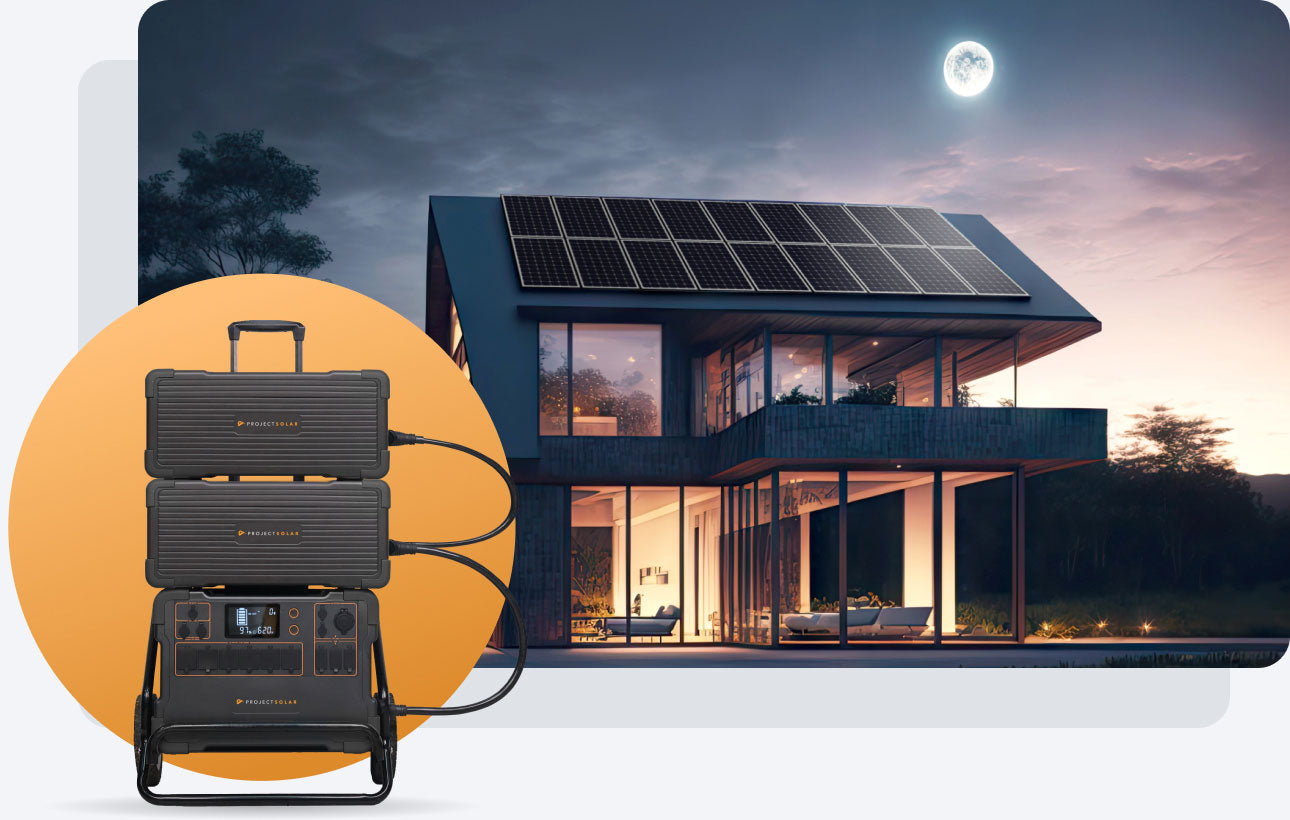
 portable batteries
portable batteries
Portable Power Wherever You Go
Power your devices anytime, anywhere with a portable, long-lasting battery storage that’s perfect for home, camping, road trips, festivals, emergencies, and more.
Best Equipment in the Industry
At Project Solar, we prioritize quality and innovation. Our cutting-edge all-black panels are paired with Enphase micro inverters to deliver unparalleled aesthetics and functionality.-
Panels
Our sleek black-on-black monocrystalline panels not only look great but also deliver outstanding performance.
-
Inverters
Enjoy top-notch inverters with your solar system, including panel-level monitoring and a 25-year triple-backed warranty.
-
Batteries
Maximize your ROI with reliable battery options. Experience backup power during outages and optimized energy usage during peak hours for unparalleled efficiency.
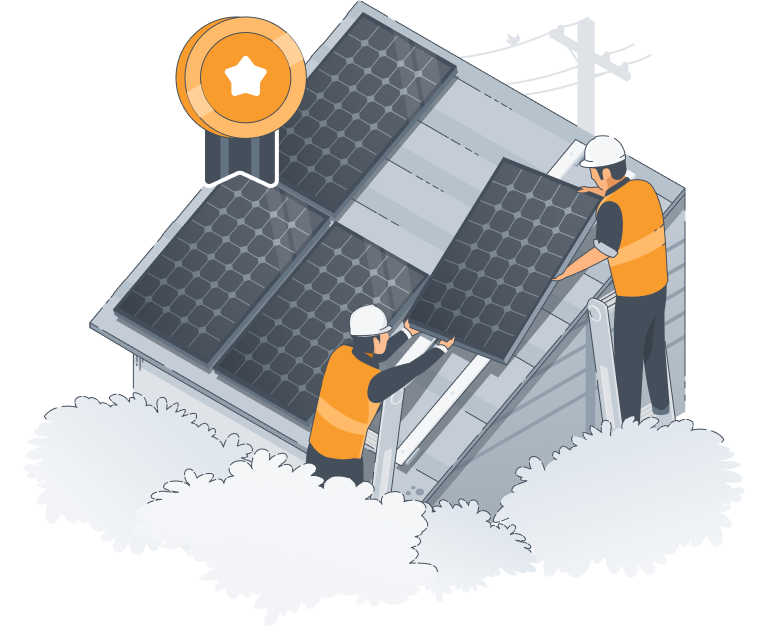

25 Year Warranty
Enjoy peace of mind with a 25-year manufacturer's equipment warranty and a 25-year production guarantee! We ensure your system meets promised production levels, or you'll receive reimbursement!
Prefer DIY?
It’s Easier Than You Think.
If you're comfortable getting on your roof and reading construction plans, you can install solar with Project Solar. We make DIY simple by taking care of the design, engineering, and permitting for you. With our DIY packet, you just need to do 4 easy steps:
-
Drill Anchors
-
Connect Racking
-
Attach Panels
-
Connect + Run Wires
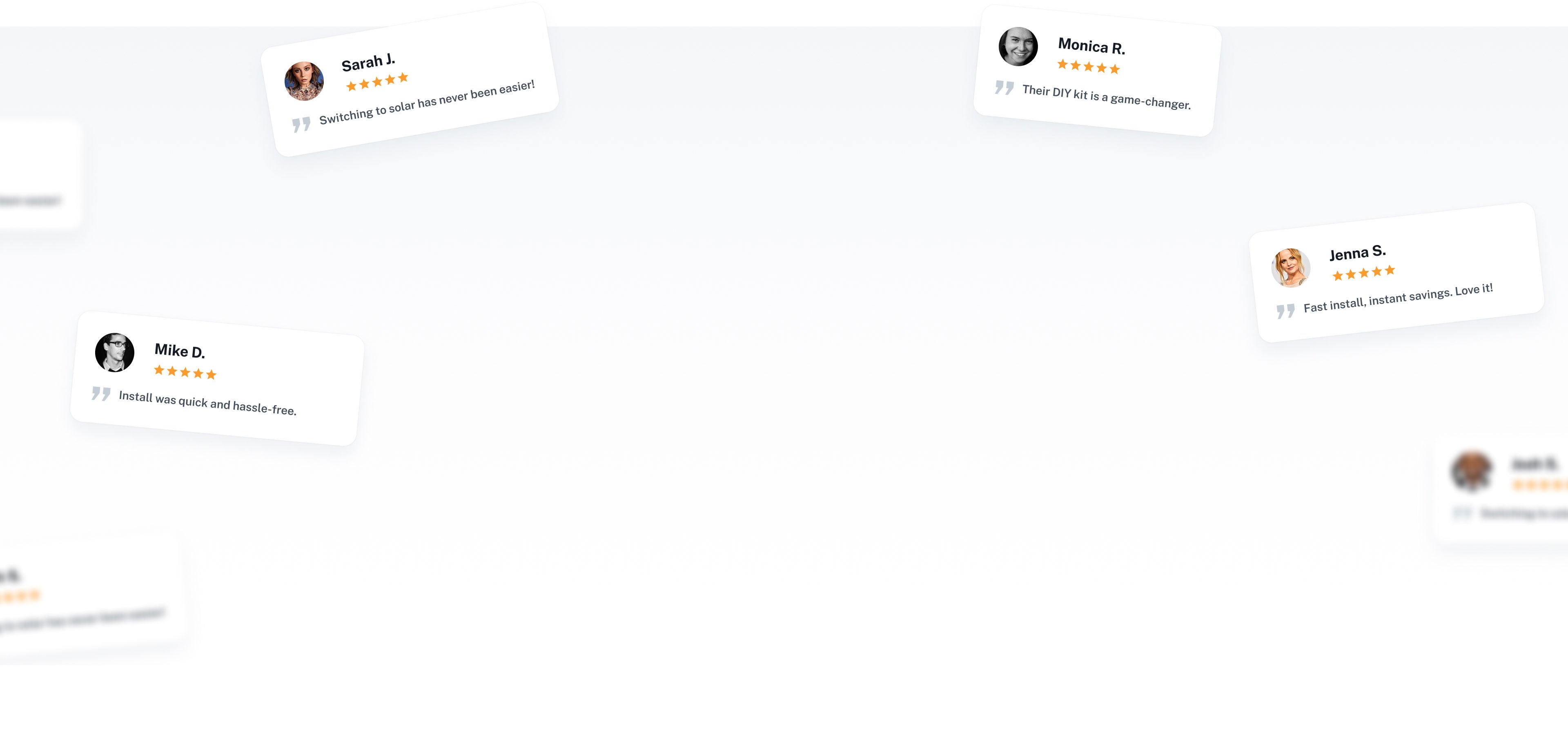
Solar without Sales Reps =
Happy Customers!
-
6,342
Full Service Installs
-
4,356
DIY Installs
-
$26,134,356
Saved by Our Customers
We've Got You Covered
FAQ
Shedding Light on Solar
How does Project Solar ensure the lowest prices for solar projects?
Our main goal at Project Solar is to offer the best price for solar in the nation, without any sales commissions. This means using a model driven by fairness and transparency - a stark contrast to the inconsistent pricing practices prevalent in the solar industry.
Many solar companies base their pricing on factors such as sunlight availability and local electricity rates, often charging more in areas with higher rates (even if their costs remain consistent). This approach can lead to customers paying substantially more for the same solar system.
At Project Solar, we believe in a flat pricing model that ensures consistency and equity for all customers, irrespective of utility rates or incentives. We don't manipulate our prices from project to project, and we strive to provide a universal, reliable, and cost-effective solution to each customer.
Our pricing structure takes into consideration both economies of scale and fixed costs associated with solar installations. While larger systems naturally have higher total costs, the cost per watt decreases due to the economies of scale.
To achieve a fair balance, we use a sliding scale price-per-watt (PPW) model which ensures proportional costs across a range of system sizes.
For DIY installations, systems larger than 13 kW are priced at $1.80 per watt, while smaller systems begin at $2.10 per watt for 4 kW installations (systems below 4 kW will have a small system size adder).
If you're interested in a Full Service install, we offer this service for an additional $0.50-$0.70 per watt (depending on location).
It's important to note that these prices reflect the actual cost: they do not consider state and federal incentives, which are rightfully yours and not factored into our pricing.
For more information about our pricing, as well as a full list of any possible added costs ("adders"), check out this article: Pricing with Project Solar - How it Works and How to Analyze
What is the double-backed warranty for installations by Project Solar Partners?
If you have our Project Solar Partners install your system for you, you get a double-backed workmanship warranty (which will also cover any possible solar-caused roof leaks, though these are rare). This means that both Project Solar and our Partnered Installer have agreed to be liable for the installation of your system, which adds an extra layer of security.
How soon can I expect my solar investment to pay off with Project Solar?
Another perk of getting a low price on solar is a quick pay-off time. Because the cost of solar is a lot higher at other solar companies, it takes eight to ten years for their investment to pay off. On average, our customers' systems save enough money to pay themselves off within five-and-a-half years.
Can I add a battery to my system later?
Project Solar does offer batteries, but we cannot facilitate battery-only installs. The only exception to this policy is customers who have had a system installed through us in the past.
If you’ve read our article on batteries, you’ll know that we don’t always recommend them– they're often expensive and not always worth their high price tag.
Since battery technology is relatively new to residential solar, though, prices are expected to decrease in the future and warranties are expected to improve.
Because of this, it can sometimes be more cost-effective to add a battery to your system later down the line.
Project Solar can facilitate this, as long as you installed your original system through us and batteries are offered in your area. We cannot tie-in to existing solar systems from other companies.
To read more about adding to existing systems, check out the following articles:
It's also important to note that many federal, state, and local incentives for solar are only available for use once--this means that your battery install may not be available for incentives that you received on your initial system. We recommend contacting a tax professional for full information on any tax incentives, and your local jurisdiction or power company for information on any other local incentives.
How do you decide panel placement? Can I have a say in where panels are placed on my roof?
We take several factors into account when creating your panel placement. And yes, you have a say in where your panels go. Our design team uses Aurora Solar, one of the leading design software engines in the solar industry, which helps us determine optimal panel placement.
Important Factors in Panel Placement
LIDAR
Aurora Solar gives us access to LIDAR technology, which remotely maps out precise, three-dimensional visuals of your home and the surrounding area. Our designers can then create accurate-to-scale roof layouts with roof slope and heights provided by the software. From there, we can easily place and move panels to calculate your most optimal energy offset.
Shading
Anything that casts a shadow on your roof is considered shading. Trees and other homes in the surrounding area are accounted for in Aurora Solar, helping to create an accurate sunlight exposure reading. Our designers look at this when placing panels and prioritize spots on your roof with the most sunlight access.
Irradiance
Aurora Solar also utilizes irradiance mapping – the amount of solar access your roof receives throughout the year. Some spots on your roof receive more sun than others, so our designers work to place panels where they will be the most productive for you.
Orientation
Your south-facing roof will receive more sunshine over the course of the year than your north-face roof here in the northern hemisphere. This is due to the sun's position above the equator. We will maximize panel placement on a south-facing roof first. East and west-facing roofs are also a good investment, receiving around 70% - 80% TSRF (Total Solar Resource Fraction). Having a south-facing roof is not the only way to achieve the energy offset that you want, as every roof will be a little different. Even north-facing roofs will have some solar access depending on shading and your location. Utilizing your available roof space to achieve 100% energy offset is our primary goal.
Obstructions
Another factor to consider with panel placement is the current obstructions on your roof. Anything from a vent to a skylight is an area where we cannot place a solar panel. Your design may reflect spacing between panels if something stands in the way of setting up a continuous array. It is possible to move some obstructions, like vents and piping, to accommodate solar panels, so add that to your special requests.
Fire-code Setbacks
There are specific requirements on how much space needs to be left clear on your rooftop to comply with your local fire safety codes. A pathway for firefighters must stay clear in the case of an emergency. We research what codes are in place in your area and put those requirements into Aurora Solar.
Aesthetics and Your Requests
Our team wants to make sure you get the system that not only fits your needs, but looks how you want it to look. There is a place to input special requests in your first form submission after checkout. Near the end of that form, the requests section will look like this:
Feel free to add any additional electrical usage you could be expecting, upgrades you want to make, panel placement requirements, or anything else you might want. We would love to hear from you.
What battery options does Project Solar offer?
Though they are pretty new to residential solar systems, solar batteries have recently become much more popular - particularly with the introduction and subsequent marketing of the Tesla Powerwall. Project Solar does not always recommend batteries, but we do offer them.
As part of a Full Service Installation, we offer the Enphase IQ 5P Batteries or the Tesla Powerwall 2. For DIY projects, we currently only offer the Enphase IQ 5P.
Included with our Enphase battery builds is a System Controller, which enables automatic backup in the event of a grid outage, called "backup configuration".
Without a System Controller, Enphase batteries won't be able to disconnect from the grid, and your system will shut down during outages - called "consumption offset configuration", where your battery will still work to offset your home's electricity consumption (only available with select utility companies).
Tesla Powerwalls will also include a System Controller, and are only available for backup configuration.
Though we do offer them, we don't always recommend batteries. This article will outline the following:
- Battery Downsides
- Battery Upsides
- How to Size Your Battery System
- Affordable Backup Alternatives - Power Bank
- Adding Batteries To Existing Systems
Battery Downsides
The main issue we have with batteries is cost – they’re expensive.
Adding storage to your system will increase the cost of your project, but not the size of your system – this means that they can increase your price per watt significantly.
Our battery pricing is as follows:
Product
DIY Pricing (Before Any Incentives)
Full-Service Install Pricing (Before Any Incentives
First Enphase IQ 5P Battery + 1 System Controller (Backup Configuration)
$6,500
$8,500
Each Additional IQ 5P Battery (Backup Configuration)
$3,500
$4,000
First Enphase IQ 5P Battery (Consumption Offset Configuration)*
$3,500
$4,000
Each Additional IQ 5P Battery (Consumption Offset Configuration)*
$2,500
$3,000
First Tesla Powerwall 2
N/A
$13,500
Each Additional Tesla Powerwall 2
N/A
$9,500
*Only available with select utility companies. Please contact a representative to confirm.
Most battery options are also only warrantied for around 10 years, which is less than half of the
projected life of your solar system.
Tesla follows this trend with a 10 year limited warranty. Enphase’s IQ 5P batteries have a longer warranty: 15 years or 6,000 cycles.
Like other new tech products, residential solar batteries are expected to improve over time – as are their prices and warranties. They will likely be more cost effective in the future.
Battery Upsides
We believe in providing customers with the best ROI possible, and, in some cases, batteries can be a worthwhile investment.
There are generally two main situations where this is the case:
Backup Power
Homes in areas with frequent and/or extended power outages can benefit from a solar battery. In this instance, the battery functions like a backup generator.
If the grid goes down, the system will start sending any excess power into the battery, which your home will draw energy from until grid power is restored (or until the battery is depleted).
Time-of-Use
Some power companies charge more for power used during high-traffic times, or during the evening. Others will have less advantageous net metering or solar buyback rates.
With a battery, extra energy that is produced can be captured for later use, rather than sent back into the grid.
Storing excess energy from earlier in the day can also help reduce energy use during usage times that may be more expensive.
If you opt for an Enphase consumption battery configuration, your battery will only function for this feature, and won't be able to disconnect from the grid during outages (as a System Controller is not included).
Should you fall into one of these categories, batteries may be right for you – otherwise, they may not be as profitable of an investment.
How to Size Your Battery System
Most customers simply decide to install around 5-10kWh of batteries, but if you are concerned with specifics, our Customer Experience Team can help you size a battery system based on your usage patterns and the appliances you wish to back up. The Enphase Estimator can also be a helpful resource in sizing Enphase battery systems.
Affordable Backup Alternatives - Power Bank
The main hangup on batteries is simply their cost--they are expensive, even with our low pricing. To combat this and provide a more accessible option, Project Solar offers the Power Bank Solar Battery Kit.
This kit is also a great option for Full Service Install customers who don't have Enphase batteries available in their area.
The Power Bank is a portable battery that is used separately from your solar system. It can be taken with you wherever you go, or tied into your home's essential loads with a subpanel.
This option is not yet available as part of a solar install, so you will need to purchase it separately from our website.
To charge the Power Bank with solar energy, customers with a solar system can plug it in to a standard AC outlet during high-production times to capture energy and store it for later use. If you don't have a home solar system, we offer optional portable solar panels.
The Power Bank can even be charged from your car in a pinch.
Project Solar offers the Power Bank in two models: 600 & 2000. There are also Expansion Packs available for those wishing to increase their Power Bank 2000's capacity (the Power Bank 600 is not expandable).
Though it cannot provide the same automatic backup and smart-home capabilities as the Enphase battery, the Power Bank is a much less expensive option. With two Expansion Packs, the Power Bank 2000 is able to offer 8.064kWh of storage for less than $5,000.
To learn more about our Power Bank products, check out our Information Guide.
Adding Batteries to Existing Systems
Some homeowners have already installed solar without batteries in the past, and would like to add battery storage to their system now.Project Solar does not tie-in to existing systems unless they were installed through us. This also means that we do not offer independent battery installs for new customers with existing systems.Existing systems are not always compatible with the batteries we use, and it can be difficult, expensive, and even impossible to tie into them.Plus, fiddling with your existing system can affect its warranty.We recommend contacting the company who initially installed your system, an equipment distributor, and/or a local contractor. Alternatively, you could purchase a battery that doesn't have to integrate directly with your solar system, like our Power Bank Home Backup Kit.If the system was installed through us, we will most often be able to tie-in and add an integrated solar battery.
What equipment does Project Solar use for solar installations?
Equipment is one of the most important factors to consider when starting a solar project. At Project Solar, we're committed to providing the best bang for your buck. However, this doesn't just mean low pricing; it also means high quality, premium equipment.
We use Tier 1, black-on-black monocrystalline solar panels for our systems, rated to IEC 61215 (the industry gold standard). We source the best inverters out there--Enphase microinverters--for all our systems. Enphase's IQ batteries are available as well, along with the Tesla Powerwall 2. Project Solar systems include IronRidge racking and mounting, with some Unirac components for select roof types.For a list of our equipment, including data sheets, head to this page:Project Solar Equipment Specifications
How does Project Solar’s Production Guarantee work?
Project Solar's warranty covers manufacturing defects with our Power Bank products. Project Solar's warranty does not apply to units that are misused, abused, modified, damaged by accident, or used for anything other than normal consumer use as authorized in Project Solar's current product literature.
Project Solar will be responsible for return shipping in the case the return is covered under warranty.
For products damaged or lost during shipment, claims will need to be submitted to the courier. Please contact us for issues with shipment so our Fulfillment Team can assist with this.
If you have our Project Solar Partners install your system for you, you get a double-backed workmanship warranty (which will also cover any possible solar-caused roof leaks, though these are rare). This means that both Project Solar and our Partnered Installer have agreed to be liable for the installation of your system, which adds an extra layer of security.
What financing options are available?
Project Solar partners with a few lenders to offer financing options without prepayment penalties. We also accept any third-party financing, including Home Equity Line of Credit (HELOC) options.
This article will outline the following topics:
- Financing with Project Solar's Partnered Lender
- Option A - Low Overall Cost
- Option B - Low Monthly Payment - Financing a DIY Project
- Financing with an Independent Lender
- Concerning the 30% Federal ITC & Solar Financing
Financing with Project Solar's Partnered Lender
In most instances, we offer two different loan types: Option A and Option B. We've optimized these loan types to tailor to customer needs:
- Option A - Low Overall Cost
Option A is ideal for customers who are looking to pay off their solar loan in a shorter period of time, and it's the option that we recommend most often.
With these loans, your principal financed amount is simply your project's total price. Plus, any early payments will go directly towards the principal.
On average, solar owners pay off their loan within 7 years. Additionally, homeowners typically only stay in the same home for around 13 years, according to a recent study.
Option A will have a higher interest rate, but if you're planning on paying off your system early you can avoid paying excess interest.
For example: If you have a 25 year loan, but you pay off the loan after 6 years, you've avoided 19 years of interest. - Option B - Low Monthly Payment
Many solar companies offer low-rate loans, which are designed to be attractive at first glance, but in many cases can actually end up costing more in the long run.
This is mainly due to additional costs that cannot be avoided by paying your loan off early (in contrast to Option A). These types of loans can be beneficial in some situations, though.
For customers who are planning to stay in their current home for 20+ years and/or looking for a consistent, low monthly payment, Option B is ideal.
Unlike utility bills, loan payments don't change based on how much electricity you've used per month, and this consistency can be valuable.
You can review your financing choices with our free online calculator, which also provides a video walkthrough of Option A and Option B.
If you've made a deposit and started the process with us, our Customer Experience Team will have access to information about the exact lender and loan options in your area. They can also help you get an application submitted.
Financing a DIY Project
Our financing partners cannot finance DIY projects, so DIY customers will need to pay cash or finance their project with a third party.
This is mostly due to the fact that DIY systems will require payment prior to the shipment of equipment, which does not line up with financing payment schedules.
In the past, some customers have opted to go with a financing company called LightStream for DIY projects or short-term financing alternatives.
Keep reading into the next section for more information on financing with a third party.
Financing with an Independent Lender
If you are a DIY customer interested in financing, you were not approved through a Project Solar partnered lender, or you simply would like different financing options, we also accept any independent financing alternatives.
It's important to note that we treat independent financing as a cash payment on our end, so you will be required to follow the cash payment schedule that is outlined in your contract.
This unaffiliated list of solar financing companies can be a great resource when shopping around: Solar Loan Providers.
I's also a good idea to check with your own bank or credit union; they may have resources available to finance your system, particularly if you are considering a home equity loan or HELOC.
To read more about home equity financing options, check out this article from EnergySage.
Concerning the 30% Federal ITC & Solar Financing
The Federal Solar Investment Tax Credit (ITC) is a tax incentive that can reduce your tax liability by up to 30% of your project's total price.
For more information on the Federal ITC for Solar, check out our article titled The Federal Investment Tax Credit for Solar or this page from the Office of Energy Efficiency and Renewable Energy. As always, Project Solar does not offer tax advice, and we recommend speaking with a tax professional for the full information in regards to tax incentives.
Most financing companies that include options for this federal incentive will structure their loans in one of two ways:
Automatic re-amortization loan structures
Some lenders will automatically re-amortize your loan after you've paid down the 30% credit, or after a specific amount of time.
For example: many companies will re-amortize the loan after ~14-18 months or after you've paid the incentive difference--whichever comes first.
If you use the incentive to pay down your loan, the loan will be re-amortized to keep your monthly payment lower and avoid excess interest.
If you choose to not pay the incentive amount, the loan will be re-amortized and your future payments increased to cover the difference.
Solar combination loans
Other companies will use a solar combination loan. A solar combination loan finances the 30% federal incentive and the remaining 70% cost separately.70% of the loan is financed for a longer term (~10-25 years), while the remaining 30% is financed for a short term (12-18 months) until you receive your tax credit. Many customers choose to pay the short-term loan in one lump sum.
Why Pay More?
We’ve cut out the salesmen and the regional offices to offer the same or better equipment for less - no sales hassles. Going green is a no-brainer for your wallet and the planet. Cheaper than fossil fuels, always!
